来自于“正正小课堂”
https://www.bilibili.com/video/av54194265
基础知识:
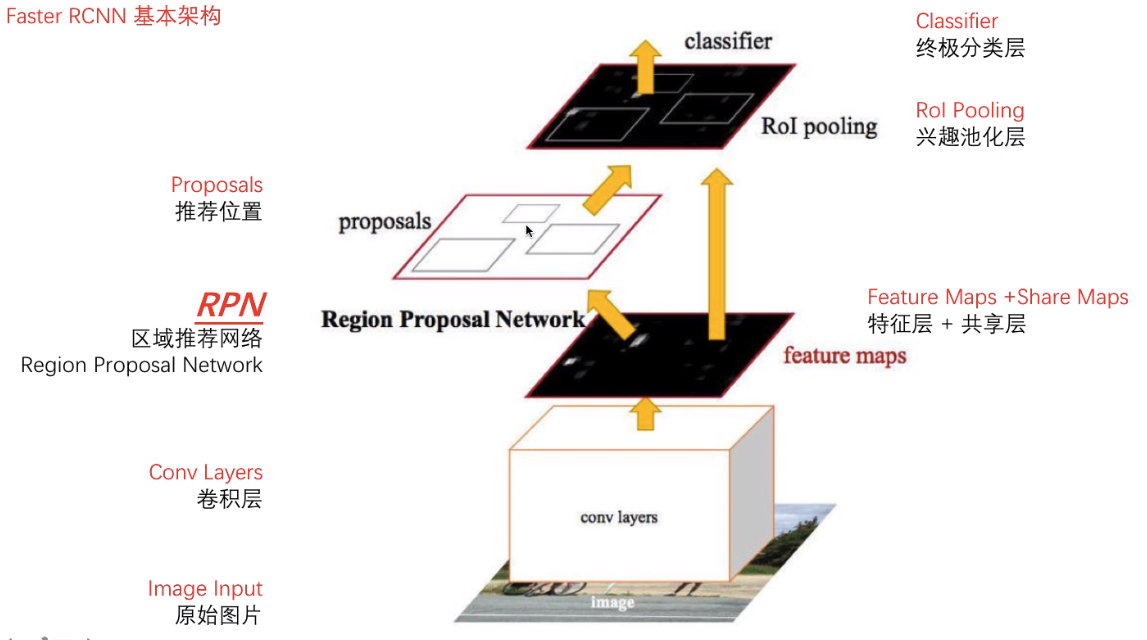
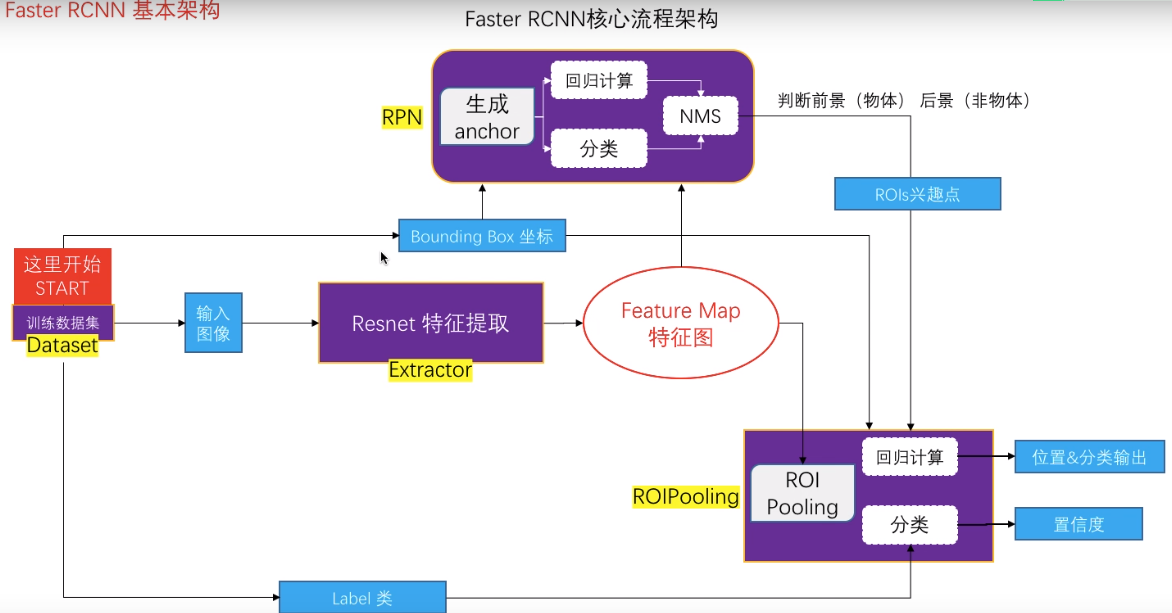

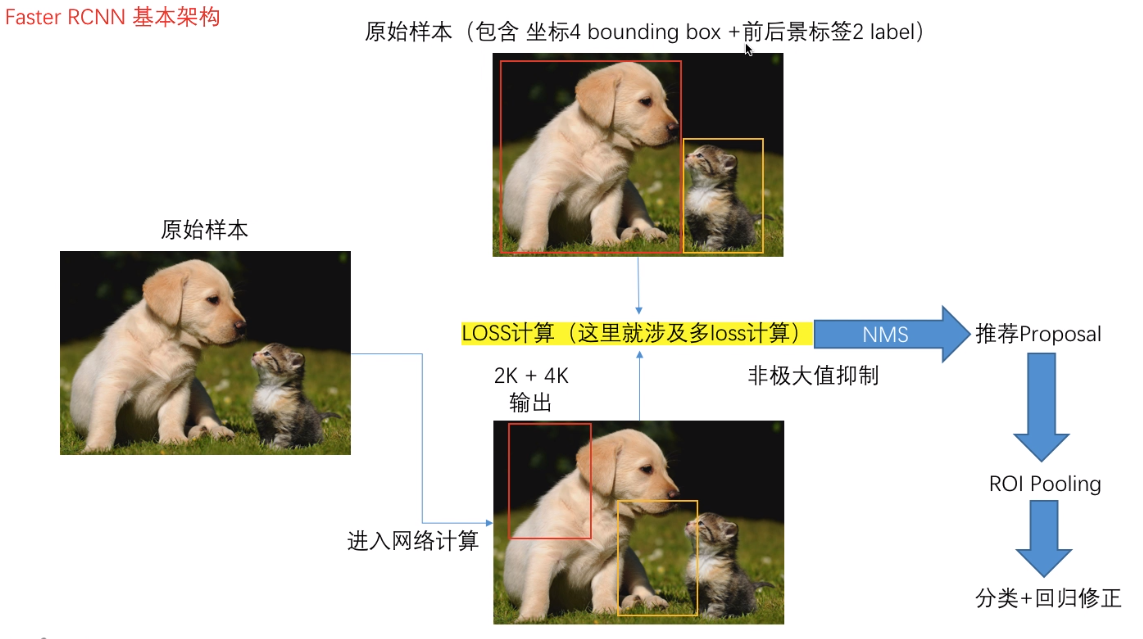
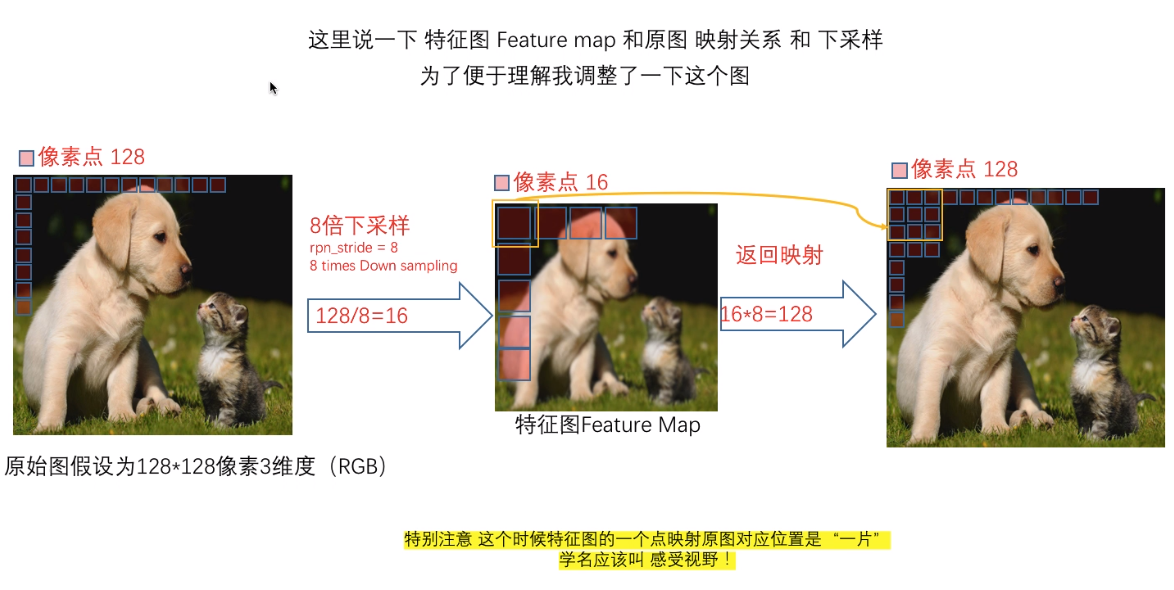
Faster RCNN Anchor生成要点
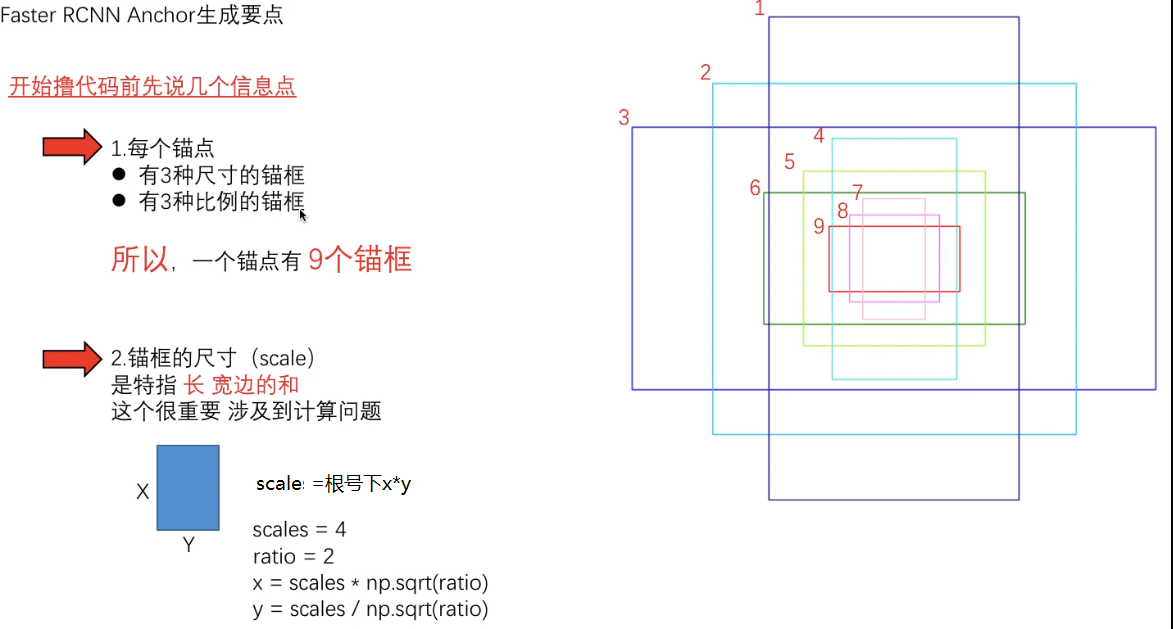
3.np.meshgrid()使用
作用:数据序列组合
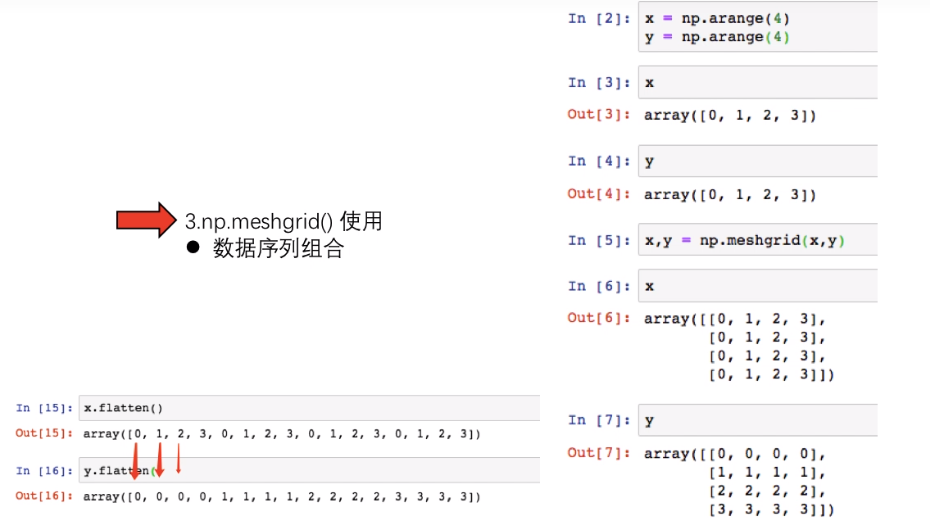
4.np.stack()使用
作用:数组组合,堆积多维度
3 × 3与3 × 3 =>2 × 3 × 3
若想维度不变,需要reshape
0:横向顺次
1:行各自
2:列对应
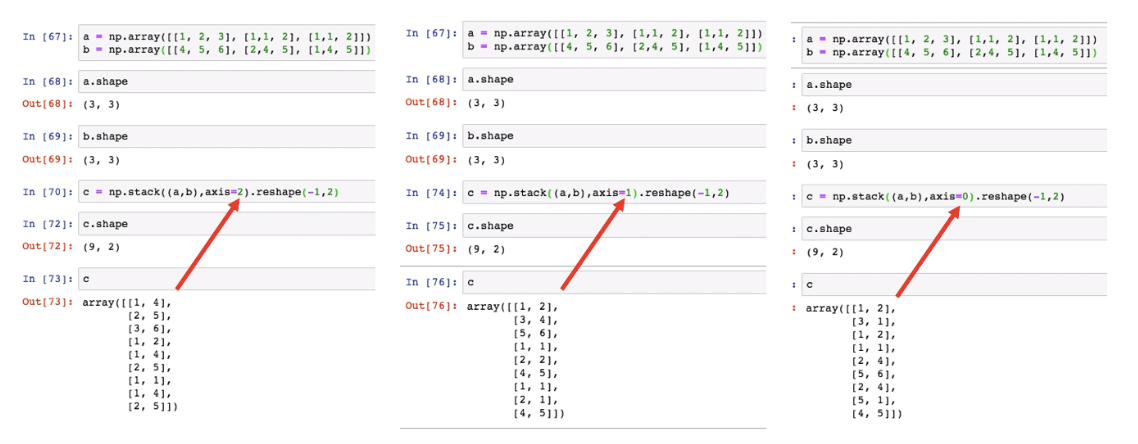
4.np.concatenate()使用
作用:数组 连接 同维度,不改变维度,合并数组
3 × 3与3 × 3 =>6 × 3
顺序同上
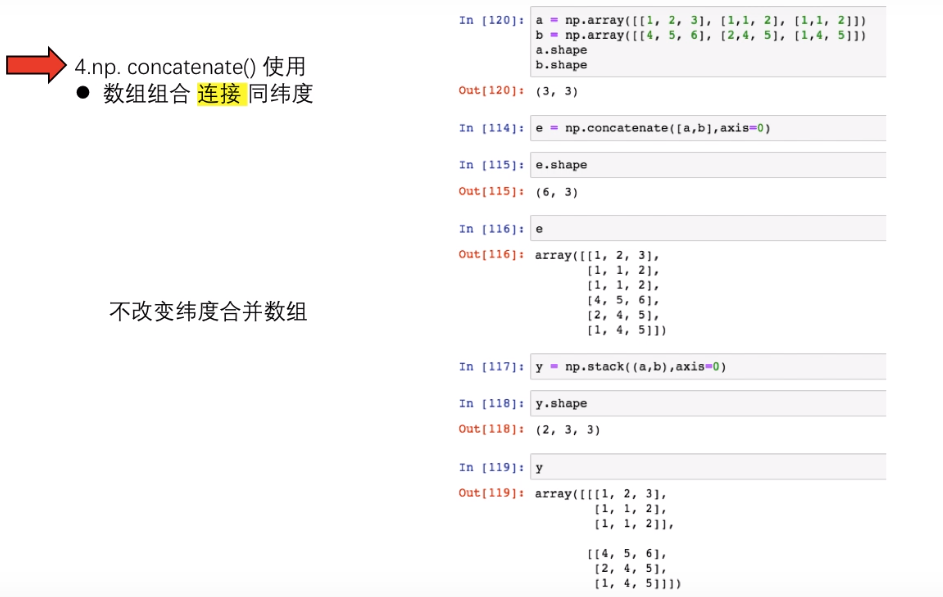
代码:
复制代码
1
2
3
4
5
6
7
8
9
10
11
12
13
14
15
16
17
18
19
20
21
22
23
24
25
26
27
28
29
30
31
32
33
34
35
36
37
38
39
40
41
42
43
44
45
46
47
48
49
50
51
52
53
54
55
56
57
58
59
60
61
62
63
64
65
66
67
68
69
70
71
72
73
74
75
76
77
78
79
80
81
82
83
84
85
86
87
88import numpy as np import keras.utils import sys import importlib import matplotlib.pyplot as plt import matplotlib.patches as patches from PIL import Image #matlotlib inline #Sample original input Sample_raw_x = 128 Sample_raw_y = 128 rpn_stride = 8 #8倍下采样 Feature_size_X = Sample_raw_x/rpn_stride Feature_size_Y = Sample_raw_y/rpn_stride scales = [1, 2, 4] #w,h的长 ratios = [0.5, 1, 2] #3的比例 """" fx = np.arange(Feature_size_X) fy = np.arange(Feature_size_Y) FX, FY = np.meshgrid(fx, fy) FX.flatten() FY.flatten() scales,ratios = np.meshgrid(scales,ratios) #做匹配 scales.flatten() ratios.flatten() print(scales.flatten()) print(ratios.flatten()) scale = 4 ratio = 2 x = scale * np.sqrt(ratio) y = scale / np.sqrt(ratio) print(x,y) """ def anchor(Feature_size_X, Feature_size_Y, rpn_stride, scales, ratios): # 组合尺寸和比例 scales ratios scales,ratios = np.meshgrid(scales,ratios) scales, ratios = scales.flatten(),ratios.flatten() #anchor尺寸计算 scalesX = scales * np.sqrt(ratios) #宽度 scalesY = scales / np.sqrt(ratios) #长度 #anchor point 映射关系 ShiftX = np.arange(0,Feature_size_X) * rpn_stride ShiftY = np.arange(0,Feature_size_Y) * rpn_stride #组合网格 anchor point在原图位置 ShiftX, ShiftY = np.meshgrid(ShiftX, ShiftY) #XY是Anchor的中心点 #每个anchor点需要有9个尺寸的anchor框 centerX, anchorX = np.meshgrid(ShiftX, scalesX) centerY, anchorY = np.meshgrid(ShiftY, scalesY) #Stack 各种尺寸,各种比例对应各种长度 anchor_center = np.stack([centerY, centerX], axis=2).reshape(-1, 2) #列对应 anchor_size = np.stack([anchorY, anchorX], axis=2).reshape(-1, 2) #左上右下坐标点输出 #1维上x的内容 boxes = np.concatenate([anchor_center - 0.5 * anchor_size,anchor_center + 0.5 * anchor_size],axis=1) return boxes anchors = anchor(Feature_size_X, Feature_size_Y, rpn_stride, scales, ratios) """ print(anchors.shape) print(anchors[1000]) """ plt.figure(figsize=(10,10)) image = Image.open('test.jpg') #128 * 128 plt.imshow(image) #plt.show() asx = plt.gca() #get current axs for i in range(anchors.shape[0]): box = anchors[i] # print(box) rec = patches.Rectangle((box[0], box[1]), box[2]-box[0], box[3]-box[1], edgecolor='r', facecolor='none') #打印小片,红色不填充 asx.add_patch(rec) plt.show()
结果图:
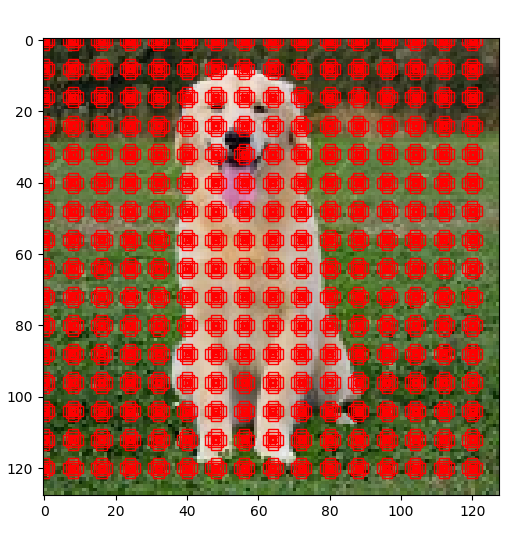
最后
以上就是体贴小鸽子最近收集整理的关于Faster-RCNN物体检测---(1)Anchor生成的全部内容,更多相关Faster-RCNN物体检测---(1)Anchor生成内容请搜索靠谱客的其他文章。
本图文内容来源于网友提供,作为学习参考使用,或来自网络收集整理,版权属于原作者所有。








发表评论 取消回复